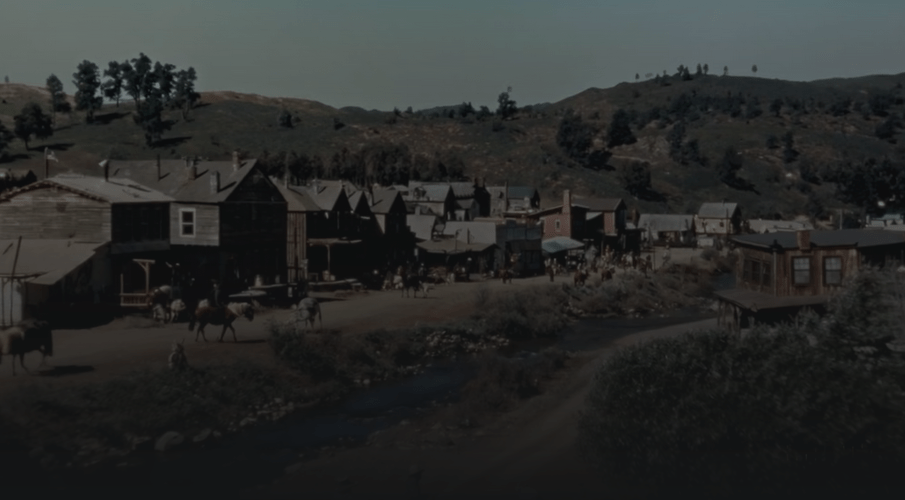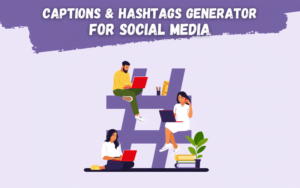Welcome to our exploration of Sora, the groundbreaking text-to-video generative AI model that is revolutionizing content generation. In this article, we’ll delve into how Sora is reshaping the landscape of visual media creation, from its innovative mechanics and applications across industries to the ethical considerations and future prospects it entails. Join us as we journey through the capabilities, limitations, and potential of Sora in shaping the future of storytelling and communication.
Table of Contents
Understanding Sora: A Game-Changing AI Model
Sora, developed by OpenAI, represents a groundbreaking advancement in the field of artificial intelligence, specifically in the realm of content generation. At its core, Sora is a text-to-video generative AI model, meaning it has the remarkable ability to transform textual prompts into dynamic video content.
How Does Sora Work?
Sora operates by leveraging a sophisticated combination of diffusion and transformer models. These models work in tandem to tackle different aspects of video generation. The diffusion model excels at generating intricate low-level textures, while the transformer architecture, akin to that used in GPT, focuses on high-level composition.
The Mechanics Behind Sora
The process begins with each frame of the video being initialized as static noise. Through iterative refinement guided by machine learning, Sora gradually molds these noise patterns into coherent video frames that align with the provided text prompt.
Key Features of Sora
One of Sora’s standout features is its ability to consider multiple video frames simultaneously. This innovation addresses the challenge of maintaining consistency when objects move in and out of view within a scene. By ensuring coherence across frames, Sora produces videos that feel fluid and natural.
The Role of Recaptioning
To enhance the fidelity of generated videos, Sora incorporates a recaptioning technique. This involves using GPT to rewrite the user’s prompt, enriching it with additional detail. By providing Sora with a more comprehensive understanding of the desired outcome, recaptioning facilitates the creation of more nuanced and accurate video content.
In summary, Sora represents a remarkable leap forward in AI-driven content generation. By harnessing the power of diffusion and transformer models, Sora empowers users to effortlessly translate textual ideas into captivating video narratives. With its innovative approach and impressive capabilities, Sora is poised to revolutionize the way we create and consume visual content in the digital age.
The Mechanics Behind Sora: Diffusion and Transformer Models
Sora’s exceptional capability to transform text prompts into visually stunning videos is underpinned by its innovative use of diffusion and transformer models.
Diffusion Models: Crafting Intricate Textures
At the heart of Sora’s video generation process lies the diffusion model. This model excels at generating intricate low-level textures, laying the foundation for the visual elements of the resulting videos. Through a series of iterative steps, the diffusion model gradually refines the initial static noise frames, infusing them with detail and complexity.
Transformer Architecture: Orchestrating Composition
Complementing the diffusion model is the transformer architecture, a cornerstone of Sora’s video generation framework. Inspired by the transformer models utilized in GPT, this architecture focuses on high-level composition, guiding the overall structure and narrative flow of the generated videos.
Synergistic Combination
What sets Sora apart is its seamless integration of diffusion and transformer models, harnessing the strengths of each to deliver cohesive and visually engaging video content. While the diffusion model handles the intricate details and textures within individual frames, the transformer architecture orchestrates the broader composition, ensuring coherence and narrative continuity throughout the video sequence.
By leveraging the synergistic interplay between diffusion and transformer models, Sora achieves unparalleled levels of sophistication and realism in text-to-video generation. This innovative approach not only revolutionizes the field of content creation but also opens up new avenues for creative expression and storytelling in the digital realm.
Enhancing Fidelity: Elevating Quality: The Recaptioning Technique of Sora
In its pursuit of delivering high-fidelity video content, Sora employs a powerful strategy known as recaptioning. This technique plays a crucial role in enriching the user’s initial text prompt, thereby providing Sora with a more comprehensive understanding of the desired outcome.
Enriching Text Prompts
Recaptioning involves leveraging the capabilities of GPT to rewrite the user’s prompt with additional detail and context. By enriching the prompt, Sora gains deeper insights into the user’s intentions and preferences, enabling it to generate more nuanced and accurate video content.
Improving Content Quality
The recaptioning technique enhances the fidelity of the generated videos by ensuring that Sora has access to a broader range of information and specifications. This results in videos that closely align with the user’s expectations, capturing the essence of the original prompt with greater precision and clarity.
Enabling Customization
Furthermore, recaptioning empowers users to fine-tune their video generation process by providing specific instructions and preferences within the rewritten prompt. Whether it’s adjusting visual aesthetics, refining narrative elements, or incorporating intricate details, recaptioning facilitates a more personalized and tailored video creation experience.
In summary, the recaptioning technique serves as a cornerstone of Sora’s commitment to enhancing fidelity and user satisfaction in text-to-video generation. By enriching text prompts with additional detail and context, Sora is able to deliver videos that not only meet but exceed the user’s expectations, paving the way for a new era of immersive and engaging visual storytelling.
Maintaining Consistency: Solving Temporal Challenges
Sora’s ability to maintain consistency across video frames is a testament to its innovative approach to addressing temporal challenges inherent in content generation.
Multi-Frame Consideration
One of Sora’s key strengths lies in its capacity to consider multiple video frames simultaneously. This unique capability allows Sora to anticipate and adapt to changes in the scene over time, ensuring that objects and visual elements remain consistent and cohesive throughout the video sequence.
Seamless Transitioning
By taking a holistic view of the video’s temporal evolution, Sora is able to seamlessly transition between frames, mitigating disruptions and preserving continuity in the narrative flow. Whether it’s tracking the movement of objects or adjusting visual attributes, Sora’s multi-frame consideration ensures a smooth and immersive viewing experience for the audience.
Dynamic Adaptation
Moreover, Sora’s dynamic adaptation capabilities enable it to respond intelligently to changes in the scene, adjusting its generation process in real-time to maintain consistency and coherence. This agility allows Sora to tackle complex scenarios with ease, from dynamic camera movements to evolving environmental conditions.
Sora’s adeptness at maintaining consistency in video generation represents a significant milestone in the evolution of AI-driven content creation. By addressing temporal challenges and embracing a multi-frame perspective, Sora sets new standards for realism and coherence in text-to-video generation, ushering in a new era of immersive and captivating visual storytelling.
Exploring Use Cases: Sora’s Impact Across Industries
Sora’s versatility extends beyond traditional content creation, with its applications spanning across a diverse range of industries and sectors.
Social Media Marketing
In the realm of social media marketing, Sora offers unprecedented opportunities for brands and influencers to create engaging and visually compelling content. From eye-catching product demonstrations to immersive storytelling experiences, Sora enables marketers to captivate their audience and drive engagement on platforms like TikTok, Instagram, and YouTube.
Advertising and Promotion
Sora’s ability to generate high-quality video content quickly and efficiently revolutionizes the advertising and promotion landscape. Brands can leverage Sora to create dynamic ads, promotional videos, and product demos that resonate with their target audience, all while saving time and resources compared to traditional video production methods.
Film and Entertainment
Filmmakers and content creators can harness the power of Sora to prototype scenes, visualize concepts, and explore creative ideas before committing to full-scale production. By streamlining the pre-production process and providing a platform for rapid iteration and experimentation, Sora empowers storytellers to bring their visions to life with unprecedented speed and flexibility.
Education and Training
In the realm of education and training, Sora serves as a valuable tool for creating immersive and interactive learning experiences. Educators can use Sora to develop engaging educational videos, simulations, and tutorials that enhance student comprehension and retention, fostering a more dynamic and effective learning environment.
From marketing and advertising to film and education, Sora’s impact across industries is profound and far-reaching. By unlocking new possibilities for content creation and storytelling, Sora is poised to transform how we communicate, engage, and interact in the digital age, shaping the future of visual media and beyond.

Addressing Limitations: Ethical Considerations and Risks
While Sora represents a groundbreaking advancement in content generation, its deployment is not without ethical considerations and potential risks.
Generation of Inappropriate Content
One of the primary concerns surrounding Sora is the potential for the generation of inappropriate or harmful content. Without proper oversight and safeguards in place, there is a risk that Sora could be used to create videos containing violence, gore, sexually explicit material, or other forms of offensive content, posing risks to users and audiences alike.
Misinformation and Disinformation
The power of Sora to create highly realistic and convincing videos also raises concerns about the spread of misinformation and disinformation. Deepfake videos generated by Sora have the potential to deceive viewers and propagate false narratives, leading to widespread confusion, distrust, and harm. Addressing this risk requires robust measures to authenticate and verify the authenticity of video content generated by Sora.
Biases and Stereotypes
Like other AI-driven systems, Sora is susceptible to biases and stereotypes present in the training data, which can manifest in the generated videos. These biases can perpetuate harmful stereotypes, reinforce existing inequalities, and marginalize certain groups of people. To mitigate this risk, it is essential to critically evaluate and address biases in the training data and algorithms powering Sora.
While Sora holds tremendous potential for transforming content creation and storytelling, it is essential to address the ethical considerations and risks associated with its deployment. By implementing robust safeguards, promoting transparency and accountability, and fostering responsible usage practices, we can harness the power of Sora while mitigating its potential negative impacts on society.
Alternatives and Future Directions: Navigating the Landscape of Content Generation
While Sora represents a significant leap forward in AI-driven content generation, it is not the only player in the field. Several alternatives and emerging technologies offer distinct approaches to text-to-video generation, each with its own strengths and limitations.
Runway Gen-2
Runway Gen-2 is one of the most prominent alternatives to Sora, offering a web and mobile platform for text-to-video generative AI. With its user-friendly interface and powerful features, Runway Gen-2 provides creators with an intuitive tool for bringing their ideas to life through video content.
Lumiere
Google’s Lumiere is another noteworthy contender in the text-to-video AI landscape. Built as an extension to the PyTorch deep-learning framework, Lumiere empowers developers and researchers to explore the potential of AI-driven video generation and push the boundaries of what’s possible in content creation.
Make-a-Video
Meta’s Make-a-Video platform, available via a PyTorch extension, offers users a seamless and intuitive way to create videos from text prompts. With its emphasis on accessibility and ease of use, Make-a-Video democratizes video production, enabling creators of all skill levels to unleash their creativity.
Emerging Competitors
In addition to these established players, several emerging competitors are entering the text-to-video generative AI space, each with its unique value proposition and target audience. Pictory, Kapwing, Synthesia, HeyGen, Steve AI, and Elai are just a few examples of the diverse range of tools and platforms shaping the future of content generation.
Future Directions
Looking ahead, the landscape of content generation is poised for continued innovation and evolution. As AI technologies continue to advance and mature, we can expect to see even more sophisticated and capable tools emerge, further blurring the line between human creativity and machine intelligence. By staying informed, adaptable, and open to experimentation, creators can navigate this dynamic landscape and harness the full potential of AI-driven content generation for years to come.
What’s Next for Sora: Advancements and Potential Developments
As Sora continues to push the boundaries of AI-driven content generation, the future holds exciting prospects for advancements and potential developments.
Enhanced Capabilities
One direction for Sora’s development is the enhancement of its capabilities, including improved fidelity, realism, and flexibility in generating video content. By refining its underlying models and algorithms, Sora can offer users even greater control and precision in shaping their creative visions.
Integration with Emerging Technologies
Sora’s evolution may also involve integration with emerging technologies such as augmented reality (AR) and virtual reality (VR), opening up new possibilities for immersive and interactive storytelling experiences. By leveraging the unique affordances of AR and VR platforms, Sora can further elevate the impact and engagement of its generated content.
Collaboration and Co-Creation
Another area of potential development for Sora is fostering collaboration and co-creation among users. By enabling multiple users to contribute to the creation of a single video project, Sora can facilitate collaborative storytelling endeavors and collective creativity, fostering a sense of community and shared ownership among creators.
The future of Sora is brimming with possibilities for advancements and innovations in AI-driven content generation. By continuously pushing the boundaries of technology and creativity, Sora is poised to redefine the landscape of visual media and storytelling, empowering creators and audiences alike to imagine, explore, and create in unprecedented ways.
In conclusion, Sora stands at the forefront of AI-driven content generation, poised to revolutionize the way we create, consume, and interact with visual media. With its groundbreaking capabilities, including text-to-video transformation, multi-frame consideration, and fidelity enhancement through recaptioning, Sora opens up new avenues for creativity, storytelling, and expression across industries and sectors.
While Sora offers tremendous opportunities for innovation and exploration, it also raises important ethical considerations and risks that must be addressed. From the generation of inappropriate content to the spread of misinformation and biases, it is essential to implement robust safeguards, promote responsible usage practices, and foster transparency and accountability in the deployment of Sora and similar technologies.
Looking ahead, the future of Sora holds exciting prospects for advancements and developments, including enhanced capabilities, integration with emerging technologies, and fostering collaboration and co-creation among users. By continuing to push the boundaries of technology and creativity, Sora paves the way for a new era of immersive and engaging visual storytelling, shaping the future of content creation and communication in the digital age.
FAQ: Common Questions About Sora and Text-to-Video AI
1. What is Sora?
Sora is a text-to-video generative AI model developed by OpenAI. It has the capability to transform textual prompts into dynamic and visually engaging video content, revolutionizing the process of content creation.
2. How does Sora work?
Sora operates by leveraging a combination of diffusion and transformer models. The diffusion model handles low-level texture generation, while the transformer architecture orchestrates high-level composition, resulting in coherent and immersive video sequences.
3. What are the key features of Sora?
Some key features of Sora include its ability to consider multiple video frames simultaneously, maintain consistency across frames, and enhance fidelity through recaptioning. These features enable Sora to deliver high-quality video content that aligns closely with user prompts.
4. What are the limitations of Sora?
While Sora offers groundbreaking capabilities, it also poses ethical considerations and risks, including the generation of inappropriate content, spread of misinformation, and perpetuation of biases present in the training data.
5. How can Sora be used?
Sora has diverse applications across industries, including social media marketing, advertising, film production, education, and training. It enables users to create engaging and immersive video content for various purposes, ranging from brand promotion to storytelling and education.
6. What’s next for Sora?
The future of Sora holds exciting prospects for advancements and potential developments, including enhanced capabilities, integration with emerging technologies like AR and VR, and fostering collaboration and co-creation among users.





